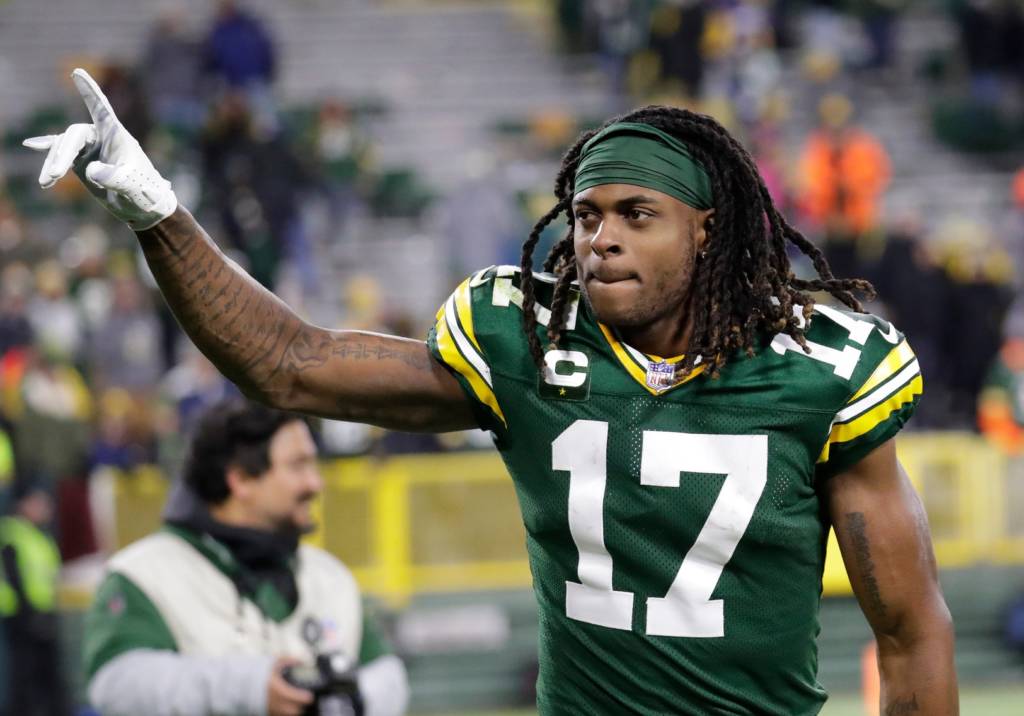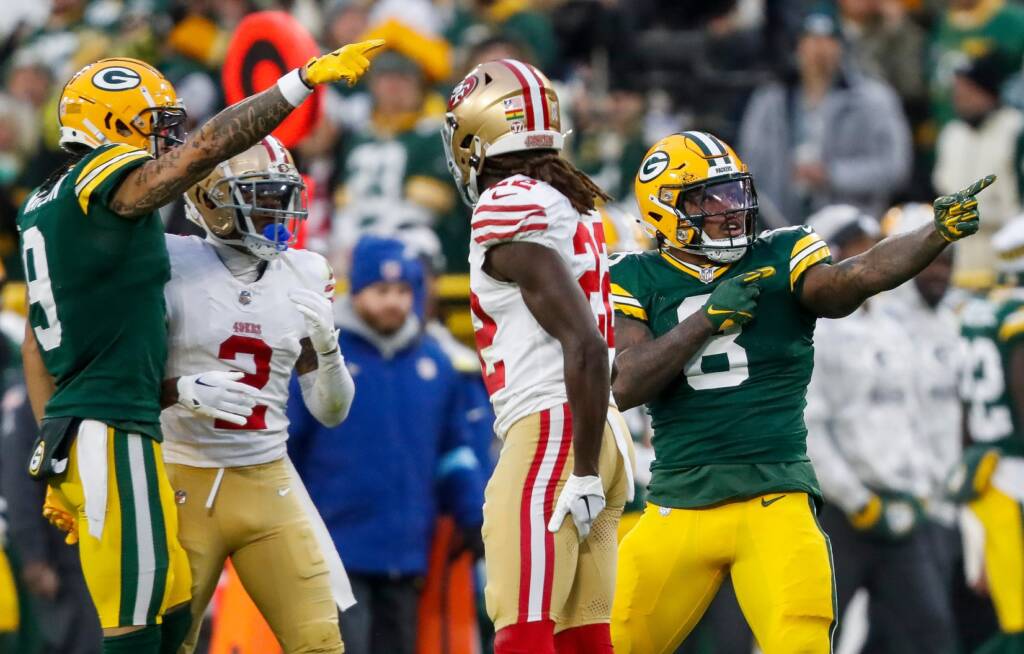There is no way around it: Davante Adams is a great player. He has been the best wide receiver in the NFL for the last two years. The Green Bay Packers are obviously going to miss him on the field, especially because his connection with quarterback Aaron Rodgers was so strong. But trading Adams to the Las Vegas Raiders is the right decision, and it could help the Packers now and in the future, even if it’s a stressful situation for Brian Gutekunst right now.
The Packers reportedly were willing to pay Adams the same amount the Raiders will: $141.25 million for five years ($28.25 million average per year). But that’s a risky contract considering Adams will be 30 in December. Although wide receivers are considered high-value players with significant numbers in wins above replacement and other positional value metrics, it’s also a position with a frequent influx of talent in the draft. Considering the cap space opened and the premium first- and second-round picks the Packers received, it’s easy to see why Gutekunst was willing to trade Adams.
I’m not here to say that Adams is not impactful. He is. He’s been a reliable, efficient player since 2016, even when Aaron Rodgers doesn’t play. Do you remember how good he was when Brett Hundley started half of the 2017 season? But now Adams has earned quarterback money. In fact, he’s the highest-paid non-quarterback in NFL history.
It’s hard to compare, but I don’t see him as the most impactful non-quarterback in the NFL – and it becomes more evident when we dive into the numbers. Since Matt LaFleur became the head coach, the Packers are 7-0 when Adams doesn’t play. And Rodgers has had similar numbers with and without Adams on the field since 2016. Adams is great, obviously, but sometimes the offense loses fluidity and efficiency because Rodgers refuses to find other targets.
And that’s part of the point regarding the trade. The Packers won’t – and shouldn’t even try to – find one receiver as good as Adams because there isn’t any.
If Green Bay was willing to pay Adams $28.25 million per year, they can use similar salary cap tricks to invest money in other areas. They can add two or three free-agent wide receivers to give Rodgers a more complete arsenal. They could find a good receiving tight end, reinforce the offensive line, and look for more defensive pieces.
The passing game will probably regress a little bit, but the Packers now have cap space to improve in other phases of the game. And, considering the salary cap restraints and lack of capital, a regression was on the way even before the trade. Now, there is a pathway to improvement, even if it involves being right about difficult choices moving forward.
Besides the salary cap component, the other positive factor of the deal is the draft capital. Last week, I wrote about Green Bay’s lack of weapons and the necessity of drafting wide receivers because Amari Rodgers is the only player at the position under contract with the Packers beyond 2022. Therefore, getting good, young players under cheap contracts was already a must. Even though it’s a more significant short-term issue now, the Packers have much more flexibility to address it in April.
Green Bay received picks 22 and 53 from the Raiders. The first one is especially valuable because there’s an area of the first round where good prospects might still be available – players like Jameson Williams or Chris Olave.
Between picks 22 and 28, some teams might also want receivers, like the Arizona Cardinals, Dallas Cowboys, and Tennessee Titans. Therefore, it will be essential to draft before them. The added draft capital is also relevant because the Packers can navigate the board with more options. They can select a wide receiver or get a good defender first and get multiple offensive weapons later. Green Bay might even trade down from 28 and add more capital, something important considering how top-heavy the Packers’ roster has been recently.
It’s hard to lose the best receiver in football because that’s an aspect of the game the Packers won’t be able to perfectly replace immediately. But it’s not like they’ll enter the season with Allen Lazard, Randall Cobb, and Amari Rodgers as primary receivers. Brian Gutekunst has ways to add more pieces and build a more complete team. Plus, the Packers’ offense is free to operate without a high-volume target, which opens space for Matt LaFleur to implement his concepts.
It isn’t the easiest path, and probably it wasn’t even a Packers decision. But it might be the best thing for Green Bay in the long run.

